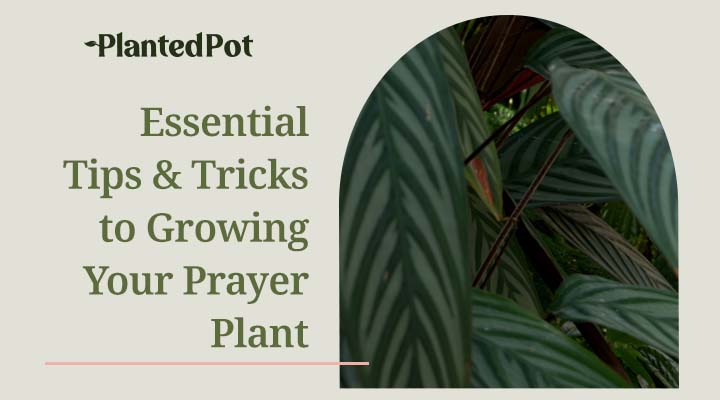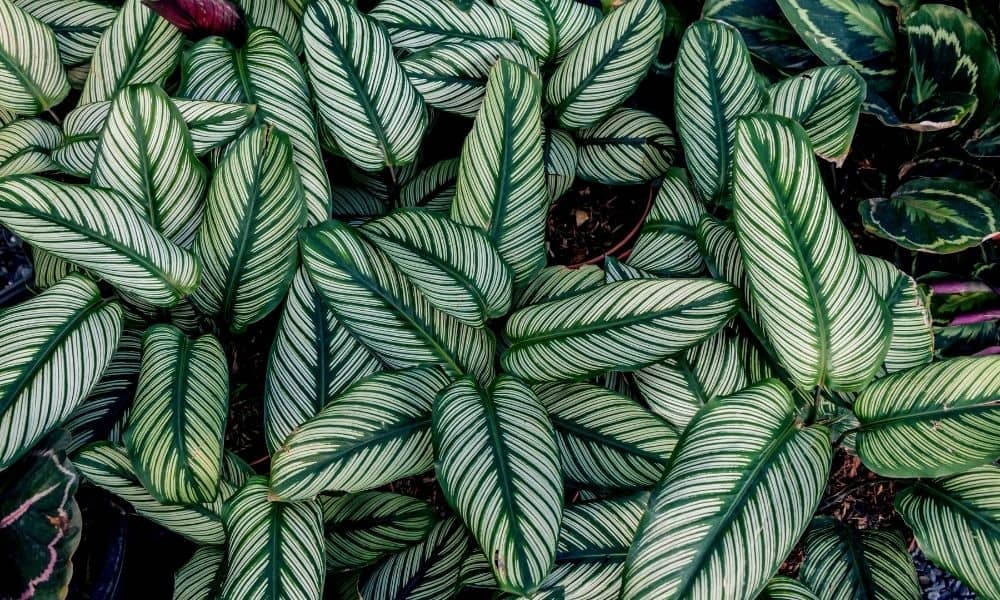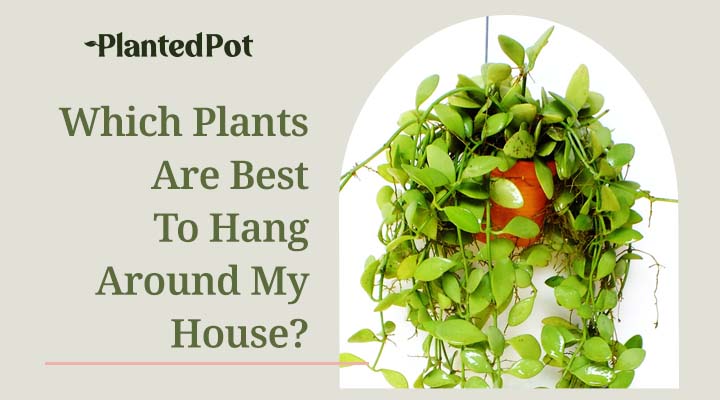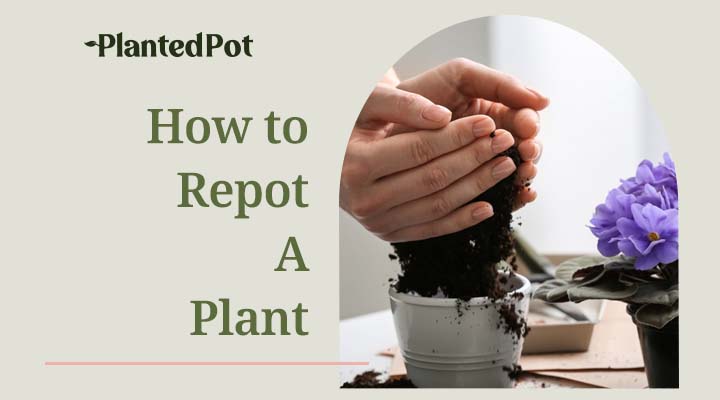
Prayer Plant Care: Easy Guide for Growing Exotic Houseplants
Home / Prayer Plant Care: Easy Guide for Growing Exotic Houseplants

Prayer Plant Care: Easy Guide for Growing Exotic Houseplants
- Olivia Richman
- March 16, 2021
- 4:11 pm
- No Comments
With dark green leaves and an exotic look, the Prayer Plant has started to gain popularity as a houseplant. But while the plant can thrive in your home, it does require some specific Prayer Plant care. This picky plant is luckily easy to take care of once you understand what it takes to help it thrive in your home.
This tropical plant prefers warm temperatures, humidity, and a good amount of water. It reminds them of their natural habitat. We will tell you precisely what it takes to recreate the Prayer Plant’s environment so it can properly thrive within your home. Trust us; its beauty and benefits are worth the extra watering!
What is a Prayer Plant?
The Prayer Plant is a very popular houseplant, thanks to its striking, dark green leaves. Each leaf has a white or light green stripe running down its spine. The veins within the leaves are dark red, like the bottom of the leaves. This distinguishable and beautiful plant is just hard for indoor gardeners to resist!
While its broad, oval leaves lay flat during the day, they notoriously fold upward at night, resembling praying hands. That’s how the plant got its name!
Native to Brazil, this low-growing plant is part of the Maranta genus named after a 16th-century Italian physician named Bartolomeo Maranta. It’s one of the most unique and recognizable tropical plants, thanks to its multi-colored leaves. It’s slow-growing and will reach about a foot when grown indoors.

Are Prayer Plants Easy to Care For?
The Prayer Plant is relatively easy to care for but does have a few specific requirements if you want it to thrive over time. They need bright, indirect sunlight, well-drained soil, and high humidity. They don’t like the cold or dry air. Plant care for this species can be a bit tricky when it comes to its environment, but can still be healthy and beautiful with proper care.
Can You Grow a Prayer Plant Indoors and Outdoors?
The Prayer Plant is most commonly grown indoors since the US Department of Agriculture states it can only thrive outdoors in Zone 11 and 12. If you are new to growing plants, plant hardiness zones are basically the areas in which a plant could survive in the winter.Planting Zone 11 is Hawaii, the Florida Keys, and Puerto Rico for the most part.
It’s considered extremely warm, with an average winter temperature of 40 to 50 degrees. There are zero frost days. Tropical plants can thrive outside in this zone (even big trees like mango trees). Planting Zone 12 is only located in Hawaii and Puerto Rico. It’s extremely warm and tropical. The average minimum temperature is between 50 and 70 degrees. It’s the warmest of all zones, so tropical plants and exotic fruits can easily grow here.
What Are the Benefits of a Prayer Plant?
The Prayer Plant is vibrant and tropical, uplifting your spirits when you see it inside your home. There’s no denying that its pop of color is great for your mood. It’s been proven that plants can boost your mental well-being and make us feel grounded. But the Prayer Plant isn’t just known for being a pretty plant. It has a lot of benefits for your health, too!
Like the Calathea Rattlesnake, this dependable plant helps clean the air by filtering indoor air pollutants, including formaldehyde and benzene. A lot of people have Prayer Plants and other leafy plants in their office to fight sick building syndrome. This is common in manufacturing plants and other buildings where a lot of chemicals might be in the air.
How to Care for a Prayer Plant
The Prayer Plant can be slightly more challenging to care for than more easy-going plants like succulents. This plant is a bit pickier and has some specific requirements. But once you get the hang of what works for your plant, you will see that it’s pretty low maintenance! So fear not!
Choosing the Right Soil
The Prayer Plant isn’t too particular about its soil. The most important thing to remember is that it must be well-draining. This plant doesn’t like to sit in soil that’s too wet too often. This can lead to root rot and other complications. Keep in mind that the soil should be acidic. The pH should be 5.5 to 6.0.
Here is an easy soil mix for your Prayer Plant:
- Perlite or coarse sand
- Garden soil
- Peat moss or coconut coir
- A pinch of lime dust
You can also add rocks or gravel to the bottom of the Prayer Plant’s pot. This will improve drainage.
Finding the Right Pot
This plant’s pot should have proper drainage holes. Like we said earlier, you don’t want the soil to get too moist between watering. This ensures that your Prayer Plant won’t be sitting in water for too long. You should start with a pot that’s about two to four inches. You won’t need to repot your plant too often since it grows so slowly. But when it becomes root-bound, it’s time to transfer it to a pot that’s about one to two inches wider than the existing pot. Add a bit of new soil.
Watering
While the Prayer Plant doesn’t like wet soil, it equally dislikes being dry. Ensure the soil is kept evenly moist at all times, especially when it’s actively growing in the spring and summer. Always use room temperature water when watering your Prayer Plant. In the winter months, reduce watering. The Prayer Plant will go dormant during colder months, and it won’t need as much water to grow. That means excess water will remain in the soil and start to rot its roots.
Feeding Your Prayer Plant
You should fertilize your plant every two weeks, starting in early spring through the fall. This can be reduced to once a month in winter months when the Prayer Plant is not growing. Use a high-quality water-soluble houseplant food that’s been diluted to half its strength.
Placement and Lighting
This tropical plant thrives best when near a window. It should be getting plenty of indirect sunlight. They can be placed somewhere a bit brighter during the winter months to encourage growth during this time. Never put your Prayer Plant in indirect sunlight.
Humidity and Temperature
Make sure your home is between 60 and 80 degrees Fahrenheit. You should also mimic a humid environment for your Prayer Plant whenever possible. Place a small humidifier or bowl of water near your plant. Fill a tray full of small stones, add water (below the stone’s level), and then place the pot on top. You can also mist your plant’s leaves frequently with room temperature water.

Pruning Prayer Plants
You should plan to prune your Prayer Plant about three times a year. This will inspire bushy growth that isn’t too leggy. Focus on removing dead or dying leaves as well. Propagating your Prayer Plant is surprisingly easy. You should do this in the spring or early summer. Pick a stem that’s close to the bottom of the plant’s stem. Place the cuttings in a mixture of moist peat and perlite and then cover it with plastic. This will help it retain moisture. Be sure to poke a few air holes!Place the cuttings in a sunny spot in your home and change the water each day. Once the roots are an inch long, place them in new soil. The stem will begin to take root in the soil.
Common Issues in Prayer Plants
The Prayer Plant is pretty versatile and reliable when given the proper care. But if something is off, you’ll start to notice a change in your plant’s appearance. Here are some of the most common issues you should be able to identify (and how to fix them).
Yellow, Dropping Leaves
If you notice that leaves are turning yellow (and some are falling off), you are most likely underwatering your plant. The Prayer Plant is very susceptible to drought. If you leave your plant unwatered too long, it will probably not survive. Yellow leaves can also be caused by overwatering. Always check your plant’s soil before watering to make sure it’s not super wet. Sitting in a bunch of water will leave your plant wilted. The Prayer Plant can also develop fungal problems from too much moisture.
Damaged, Dropping Leaves
If your plant looks damaged and is missing leaves, this can be due to cold temperatures. When your Prayer Plant is exposed to prolonged lower temperatures, the leaves will become damaged. They will eventually fall off the plant.
Try moving your plant to another location in the house. It’s possible there’s a draft in the spot you chose. Make sure they are not near any doors that lead to the outside. Try keeping your house at a warmer temperature, especially at night.
Burnt Edges
Do the tips and edges of your plant’s leaves look yellowish and burnt? That is most likely due to your tap water. The Prayer Plant is very sensitive and picky when it comes to water.
Allow tap water to stand overnight before watering. This allows the chlorine and fluoride to evaporate. You can try distilled water instead to ensure that your plant is healthy and safe. Some people also use rainwater.
Dusty Leaves
You’ll notice that your plant is covered in dust after a while. When this happens, you can use a damp cloth to wipe off the buildup. Never use shine products or anything with chemicals.
Browning Foliage
If you spot brown leaves or a white powdery substance, those are both signs of a spider mite or mealybug infestation. The Prayer Plant is prone to pests like most houseplants. When your plant is infested, treat it with a natural insecticide like neem oil. Keep it away from other plants while undergoing this process.
How Do I Know if My Prayer Plant is Dying?
The most dangerous mistake people make is underwatering their Prayer Plant. This will cause the leaves to turn yellow and eventually fall off. If you notice yellowing leaves or a bare stem, your Prayer Plant is most likely not getting enough water. If only a portion of the leaf is brown or yellow, trim off that portion of the leaf with sharp scissors. Use pruning shears to remove fully yellow leaves. Make sure you start watering your Prayer Plant more often, using distilled water that’s room temperature of warm.
Yellow leaves can also occur if your Prayer Plant is getting too much water. Always check the soil between watering. It should be slightly moist but not wet. If the soil is wet, your Prayer Plant might get root rot. That’s when the roots turn black and die. Always keep a close eye on your Prayer Plant’s leaf color. They should be dark green. If you notice any discoloration, you need to find the reason and make some changes, whether it be installing a humidifier, turning up the temperature in that room, or changing your watering routine.
Are Prayer Plants Poisonous?
This exotic plant is not toxic to your pets or children. This has been confirmed by the ASPCA. But if you don’t want your pets eating its leaves, keep the Prayer Plant out of their reach or in a room your pets can’t go in on their own.
Final Thoughts – Prayer Plant Care
If you’re looking for an exotic, bold plant that transforms any room with its one-of-a-kind leaves, look no further than the Prayer Plant. This striking beauty is glorious, making it a welcomed addition to any decor.
The Prayer Plant is more than its pretty leaves. This tropical wonder is full of benefits, keeping your home’s air clean and promoting mental well-being while you work at the office.
The Prayer Plant requires a bit more care than some plants. It can be considerably picky when it comes to watering and temperature. You might also want to ensure the area you choose for your Prayer Plant is humid. But once you know what helps the Prayer Plant thrive, it’s easy from there! With some extra water and consistency, the Prayer Plant will thrive and slowly grow into a magnificent plant for any room!
Related: Philodendron Care: An Easy-to-Use Grow Guide for Plant Enthusiasts



